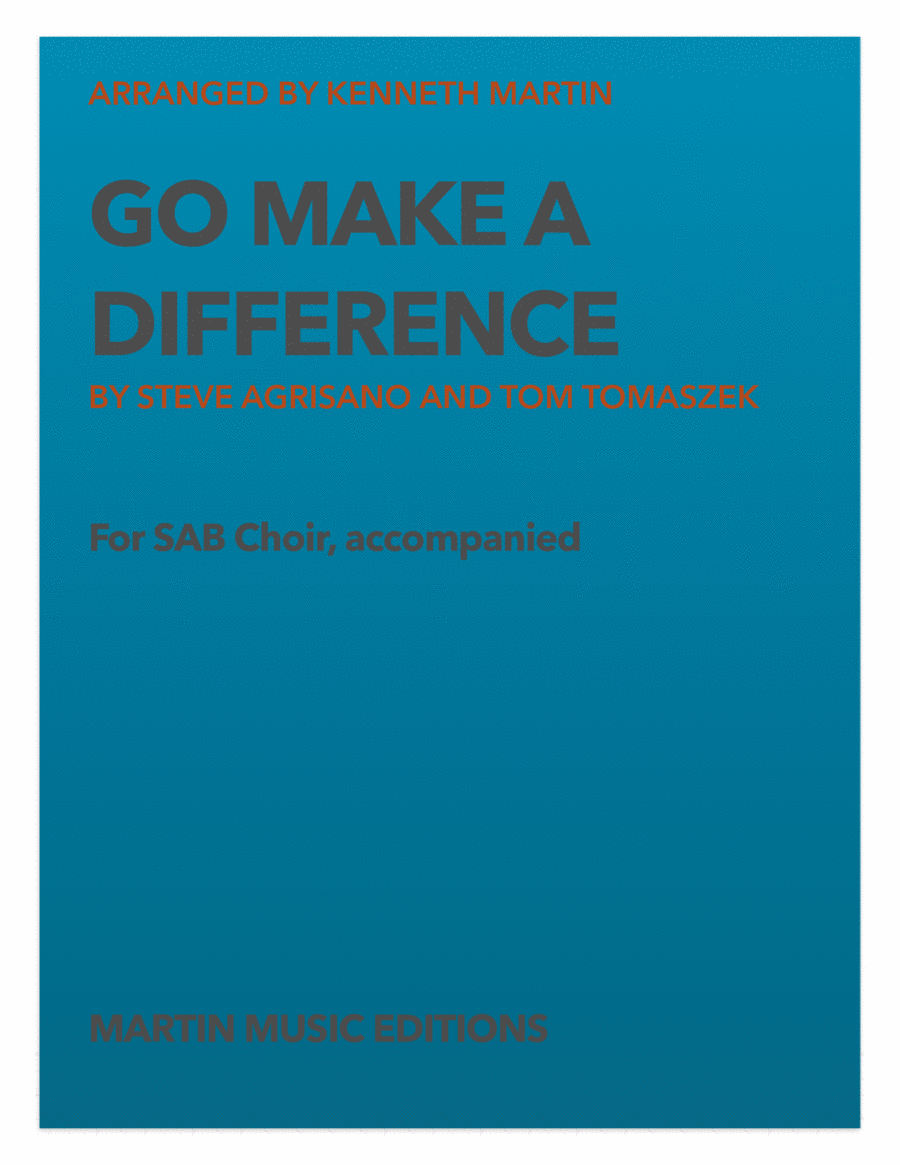Choral Choir,Choral,SAB Chorus - Level 2 - Digital Download SKU: A0.1412590 By Steve Angrisano and Tom Tomaszek. By Steve Angrisano and Tom Tomaszek. Arranged by Kenneth Martin. Contemporary,Contest,Festival,Instructional,Praise & Worship,Spiritual. 11 pages. Martin Music Editions #994608. Published by Martin Music Editions (A0.1412590). Get ready to ignite the stage with an electrifying rendition of Go Make A Difference, a dynamic arrangement originally crafted by the talented duo of Steve Angrisano and Tom Tomaszek. Now reimagined for sacred youth choirs, this rendition is a firecracker of energy and inspiration, perfect for those momentous occasions like Baccalaureate or Commencement ceremonies.Tailored specifically for SAB voicing, this arrangement is a breeze to prepare, allowing singers to dive headfirst into its infectious rhythms and uplifting harmonies. With choruses that reverberate with hope and determination, there's ample room for singers to pour their hearts into each phrase, fostering deep connections with the empowering message.The piano accompaniment is a driving force, crafted with the intermediate student accompanist in mind. It pulses with energy, propelling the choir forward while providing a sturdy foundation for the voices to soar.Based on the timeless wisdom of Matthew 5:13â16, the text of Go Make A Difference is a beacon of light in a world hungry for hope. Its words resonate particularly strongly with youth voices, inspiring them to rise to the occasion and be the change they wish to see.But here's where things truly get exciting: soloists take center stage during the verses and final chorus, infusing their unique talents into the performance. And when the breakdown section hits, complete with hand claps, the energy skyrockets, turning the performance into a celebration of passion and purpose.Directors, let your creativity run wild with this arrangement. Use it as a canvas for improvisation, exploring different vocal textures and dynamics. Whether you stick to the script or venture into uncharted musical territory, the possibilities are as limitless as the stars in the sky.With its pulsating energy, empowering message, and unwavering faith, this arrangement of Go Make A Difference is not just a songâit's a call to action. So grab your choir robes, raise your voices, and get ready to set the world on fire with your music!
